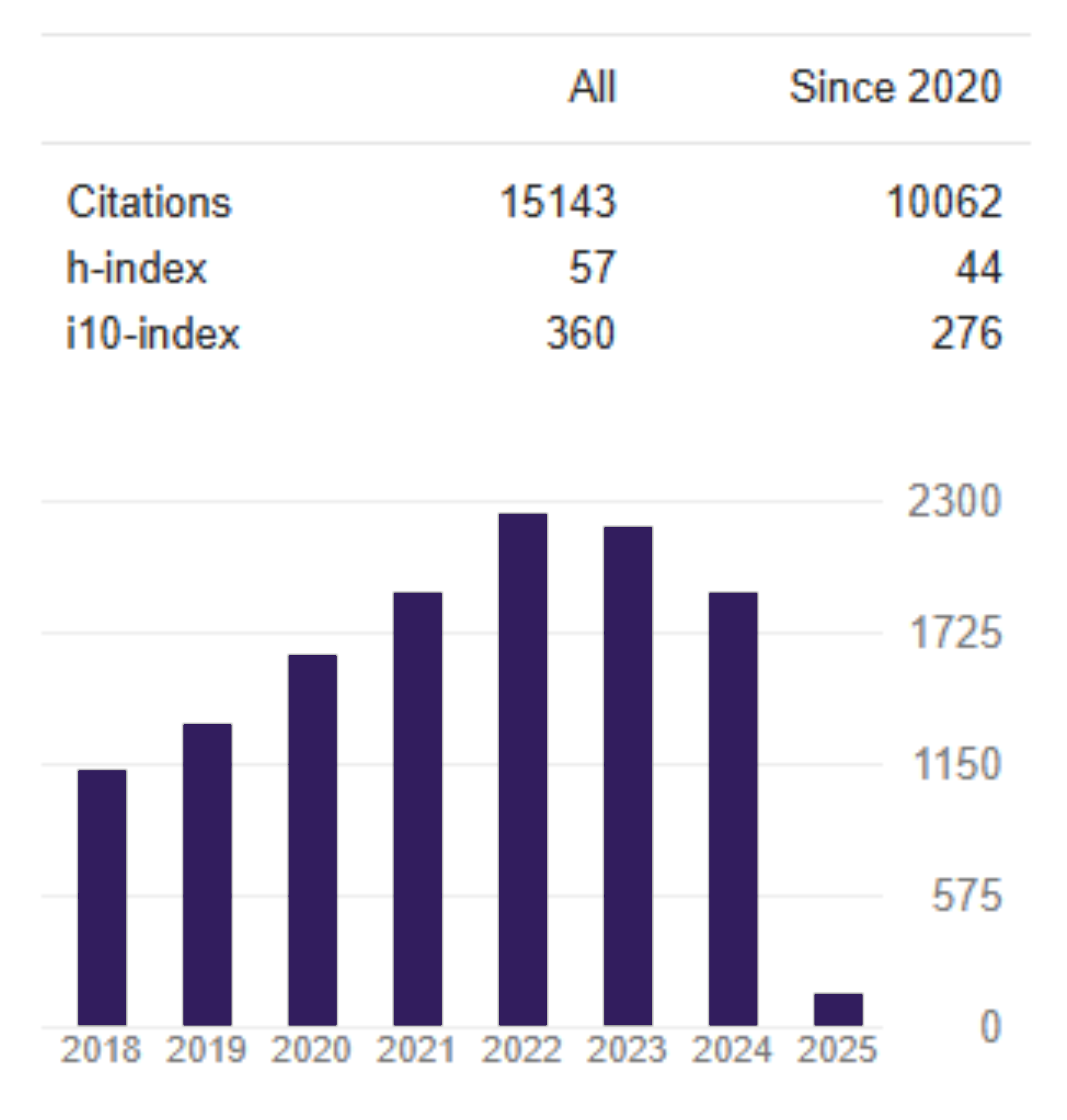Investors psychology on the biased investment decision: The mediating effect of extra-motivation to invest
DOI:
https://doi.org/10.26905/jkdp.v24i4.4837Keywords:
Extra motivation to invest, Investment decision, Investor psychologyAbstract
This study aims to prove that individual investors' psychology consisting of positive attitude, affective-self affinity, familiarity, trust, and nationalism affects investment decisions mediated by the extra motivation to invest. The data collected through questionnaires were processed and tested for the validity and reliability of the construct. Respondents in this study are individual investors who use psychological considerations as more motivation to make decisions and 404 questionnaires distributed to individual investors. This study uses Partial Least Square (PLS). It passes the fit and quality indices model criteria to determine the strength of this study's structural model before the hypothesis testing is carried out. We found four psychological variables of individual investors (positive attitude, familiarity, trust, and nationalism) that directly affect investment decisions and indirectly with the mediator of extra motivation to invest. Extra incentive to invest is not influenced by affective-self affinity and does not mediate its relationship with investment decisions. We also found that investors with psychological considerations tend to make biased decisions. Investors show behaviour that is overreaction, overconfidence, and risk tolerance (low risk with high return).
JEL Classification: F52, G11, G41
References
Aspara, J., Olkkonen, R., Tikkanen, H., Moisanderand, J., & Parvinen, P. (2008). A theory of affective self-affinity: Definitions and application to a company and its business. Academy of Marketing Science Review, 12, 1-37.
Aspara, J., & Tikkanen, H. (2011). Individuals’ affect-based motivations to invest in stocks: Beyond expected financial returns and risks. Journal of Behavioral Finance, 12(2), 78–89. https://doi.org/10.1080/15427560.2011.575970
Baker, H. K., & Ricciardi, V. (2014). How biases affect investor behavior. The European Financial Review, 7-10.
Barber, B. M., & Odean. T. (2008). All that glitters: The effect of attention and news on the buying behavior of individual and institutional investors. Review of Financial Studies, 21(2), 785–818. https://doi.org/10.1093/rfs/hhm079
Barber, B. M., & Odean, T. (2013). Chapter 22 - The behavior of individual investors. Handbook of the Economics of Finance, 2(Part B), 1533-1570.
https://doi.org/10.1016/B978-0-44-459406-8.00022-6
Christanti, N., & Linda, A. M. (2011). Faktor-faktor yang dipertimbangkan investor dalam melakukan investasi. Jurnal Manajemen Teori dan Terapan, 4(3), 37–51.
Cuong, P. K., & Jian, Z. (2014). Factors influencing individual investors’ behavior: An empirical study of the Vietnamese Stock Market. American Journal of Business and Management, 3(2), 77–94. https://doi.org/10.11634/216796061403527
De Bondt, W. F. M. (1998). A portrait of the individual investor. European Economic Review, 42(3-5), 831–844. https://doi.org/10.1016/S0014-2921(98)00009-9
Finucane, M. L., Alhakami, A. S., Slovic, P., & Johnson, S. M. (2000). The affect heuristic in judgments of risks and benefits. Journal of Behavioral Decision Making, 13(1), 1–17. https://doi.org/10.1002/(sici)1099-0771(200001/03)13:1<1::aid-bdm333>3.0.co;2-s
Frieder, L., & Subrahmanyam, A. (2005). Brand perceptions and the market for common stock. Journal of Financial and Quantitative Analysis, 40(1), 57–85. https://doi.org/10.1017/s0022109000001745
Guibernau, M. (2004). Anthony D . Smith on nations and national identity: A critical assessment. Nation and National Identity, 10(1/2), 125–141.
Hendrastomo, G. (2007). Nasionalisme vs globalisasi: Hilangnya semangat kebangsaan dalam peradaban modern. Jurnal Dimensia, 1(1), 1–11.
Houjeir, R. K. (2009). WestminsterResearch. Ph.D. Thesis. University of Westminster.
Kahneman, D., & Tversky, A. (1979). Prospect theory: An analysis of decision under risk. Econometrika. Econometrica, 47(2), 263–292. https://doi.org/10.2307/1914185
Kaniel, R., Liu, S., Saar, G., & Titman, S. (2012). Individual investor trading and return patterns around earnings announcements. Journal of Finance, 67(2), 639–680. https://doi.org/10.1111/j.1540-6261.2012.01727.x
Loewenstein, G. (2000). Emotions in economic theory and economic behavior. American Economic Review, 90(2), 426–432. https://doi.org/10.1257/aer.90.2.426
Lucey, B. M., & Dowling, M. (2005). The role of feelings in investor decision-making. Journal of Economic Survey, 19(2), 211–237. https://doi.org/10.1111/j.0950-0804.2005.00245.x
MacGregor, D. G., Slovic, P., Dreman, D., & Berry, M. (2000). Imagery, affect, and financial judgment. Journal of Psychology and Financial Markets, 1(2), 104–110. https://doi.org/10.1207/s15327760jpfm0102_2
Markowitz, H. (1952). Portfolio selection. Journal of Finance, 7(1), 77-91. https://doi.org/10.1111/j.1540-6261.1952.tb01525.x
Mehra, R., & Prescott, E. C. (1985). The equity premium: A puzzle. Journal of Monetary Economics, 15(2), 145–161. https://doi.org/10.1016/0304-3932(85)90061-3
Olsen, R. (2012). Trust: The underappreciated investment risk attribute. Journal of Behavioral Finance, 13(4), 308–313. https://doi.org/10.1080/15427560.2012.735728
Rubaltelli, E., Lotto, G. P., Ritov, I., & Rumiati, R. (2015). Moral investing: Psychological motivations and implications. Judgment and Decision Making, 10(1), 64-75.
Rubaltelli, E, Pasini, G., Rumiati, R., Olsen, R, A., & Slovic, P. (2010). The influence of affective reactions on investment decisions. The Journal of Behavior Finance, 11(3), 168-176. https://doi.org/10.1080/15427560.2010.507409
Seasholes, M. S., & Zhu, N. (2010). Individual investors and local bias. The Journal of Finance, 65(5), 1987-2010. https://doi.org/10.1111/j.1540-6261.2010.01600.x
Shefrin, H. (2000). Beyond Greed and Fear: Understanding Behavioral Finance and Psychology of Investing. Harvard Business School Press.
Shefrin, H., & Statman, M. (1985). The disposition to sell winners too early and ride losers too long: Theory and evidence. Journal of Finance, 40(3), 777–790.
https://doi.org/10.1111/j.1540-6261.1985.tb05002.x
Simon, H. A. (1955). A behavioral model of rational choice. Quarterly Journal of Economics, 69(1), 99–118. https://doi.org/10.2307/1884852
Slovic, P., Finucane, M. L., Peters, E., & MacGregor, D. G. (2007). The affect heuristic. European Journal of Operational Research, 177(3), 1333–1352. https://doi.org/10.1016/j.ejor.2005.04.006
Statman, M. (2004). What do investors want? Journal of Portfolio Management, 30(5), 153–161. https://doi.org/10.3905/jpm.2004.442641
Statman, M., Fisher, K. L., & Anginer, D. (2008). Affect in a behavioral Asset Pricing Model. CFA Digest, 38(3), 87-88. https://doi.org/10.2469/dig.v38.n3.37
Strong, N., & Xu, X. (2003). Understanding the home equity bias: Evidence from survey data. Review of Economics and Statistics, 85(2), 307-312. https://doi.org/10.1162/003465303765299837
Van Esterik-Plasmeijer, P. W. J., & van Raaij, W. F. (2017). Banking system trust, bank trust, and bank loyalty. International Journal of Bank Marketing, 35(1), 97-111. https://doi.org/10.1108/IJBM-12-2015-0195
Wärneryd, K. (201). Stock-market Psychology: How People Value and Trade Stocks. Sweden: Edward Elgar
Downloads
Published
Issue
Section
License

This work is licensed under a Creative Commons Attribution-ShareAlike 4.0 International License.



